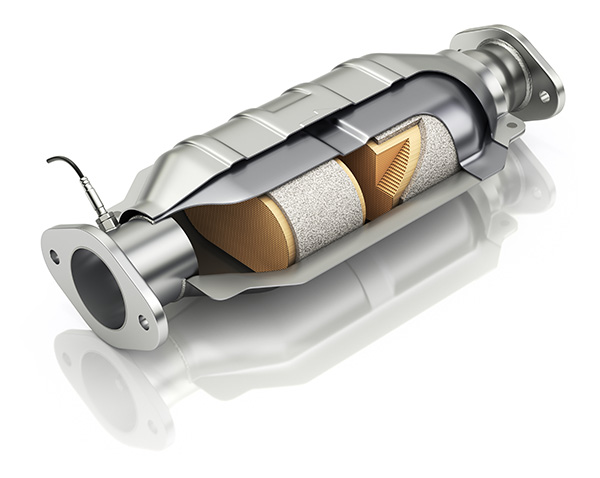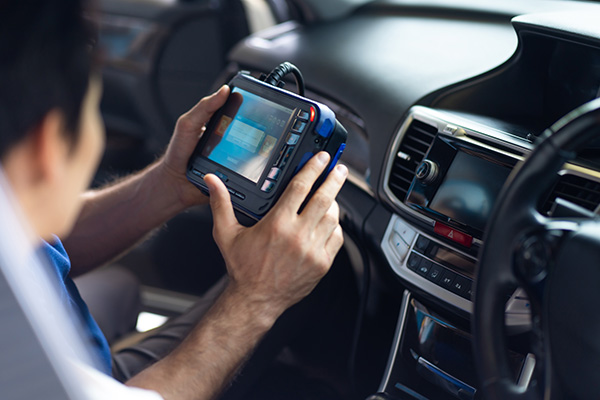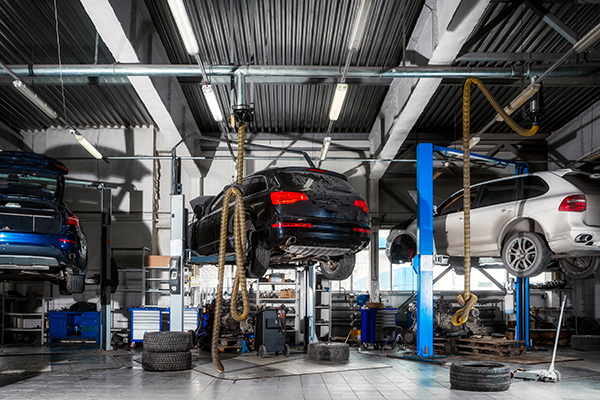Posted on 8/22/2025
Kia Sorento is a comfortable and versatile vehicle that will take you places – if you keep it well maintained. At Oceanworks Berkeley auto repair shop we provide high-quality service designed to keep you Kia Sorento in top shape for the lifetime of the vehicle. Whether it’s routine maintenance, brake inspections, suspension adjustments, transmission service, a/c refrigerant refill, or complex engine diagnostics and repairs, you can trust us to keep your Kia Sorento ready for both the everyday commute and road trip adventures. At Oceanworks, we follow factory-recommended schedule of services, as well as use advanced diagnostic tools to ensure every system in your Sorento is running at peak performance. Regular maintenance is essential to enhance safety, fuel efficiency, and the long-term value of your Kia. Here is just a small sample of the services your Kia can receive at our Berkeley auto care facility: oil and filter change, brake inspection and service, transmission fl ... read more
Posted on 8/7/2025
A few years ago catalytic converter theft became prevalent accross not just the Bay Area but the entire US. At the time we wrote about it and about the steps that could be taken to protect your vehicle from the thieves. Well, it turns out that those thefts were not just driven by local individual thieves commiting an "crime of opportunity" - it turns out there were big actors who created organizations that crossed state lines and took the catalytic conveter theft income to a whole new level. On July 21st 2025 US Department of Justice issued a press released about a New Jersey resident who pleaded guilty in federal court in Oklahoma to being in charge of a multi-state criminal organization, which mascaraded as New Jersey-based company called D.G. Auto Parts . The operation purchased and transported "large quantities" of catalytic converters stolen in ma ... read more
Posted on 7/28/2025

Your car’s oxygen sensor might be small, but it plays a big role in keeping your engine running efficiently and protecting other vital components, especially your catalytic converter. Many drivers are unaware that ignoring a failing oxygen sensor can ultimately lead to more significant and costly issues. Replacing this sensor on time helps you avoid costly repairs and maintain peak vehicle performance. What Does the Oxygen Sensor Do The oxygen sensor measures the amount of oxygen in your car’s exhaust gases and sends this data to the engine control unit (ECU). Based on this information, the ECU adjusts the air-fuel mixture to ensure optimal combustion. This process helps improve fuel efficiency, reduce emissions, and maintain smooth engine performance. What Happens When an Oxygen Sensor Fails When an oxygen sensor starts to fail, it can no longer provide accurate data to the ECU. As a result, your engine might run too rich (too much fu ... read more
Posted on 7/25/2025
Keeping your Kia Soul running at its best requires specialized care and expertise. Choosing a service and repair facility with deep knowledge of Kia vehicles is key to your car running smoothly and reliably over time. At Oceanworks Berkeley we offer comprehensive Kia Soul service and repair solutions to address the mechanical and electrical needs of this Kia model. Whether your Kia Soul is due for an oil change, for scheduled maintenance, or has mechanical or electrical issues, our team of ASE-certified technicians applies industry-leading standards and latest diagnostic tools to every service or repair. All repairs performed by our technicians carry a 24,000 mile / 24 month warranty. Our Kia Soul service and repairs cover all major mechanical, electrical, engine and fluid issues, including not just oil changes and manufacturer recommended maintenance, but also suspension work, electrical system diagnostics and repairs, car battery replacement, starter replacement, engine repai ... read more
Posted on 7/11/2025
Firestone did a study of over 9 million cars that were brought to their centers, and found that 42% suffered from underinflated tires – and that’s a national average. When broken out by states, California came in at the third worst position with 57% rate. Since underinflated tires increase rolling resistance, Firestone calculated that US drivers waste over $18 billion per year on additional fuel. Underinflated tires may seem like a minor issue, yet if you consider all the effects of underinflated tires, it can have consequences that go far beyond your wallet. Here are the issues you may encounter when driving with underinflated tires: Increased fuel consumption Handling difficulty Increased braking distance Less stability when cornering or making emergency maneuvers Uneven tire wear which often results in premature need for tire replacement Increased risk of blowouts Steering feels unresponsive Suspension stress Driving in the rain: increased probability of ... read more
Posted on 6/27/2025

Today’s cars are more than just mechanical machines. They’re rolling computers with complex software systems managing everything from how the engine runs to how your transmission shifts. At the center of it all is the powertrain control module, or PCM. This small but powerful computer is responsible for coordinating the behavior of the engine, transmission, and other drivetrain components to ensure smooth, efficient performance. Over time, as manufacturers discover ways to improve performance, fuel economy, or emissions, they release updated software for the PCM. Reprogramming your PCM installs these updates. Think of it as downloading the latest version of an app on your phone, but in this case, it can improve how your car drives and prevent future problems. What Exactly Does the PCM Control The PCM processes input from dozens of sensors located throughout your vehicle. These sensors monitor variables like engine temperature, air intake, throttle positi ... read more
Posted on 6/25/2025
If one day you turn on your vehicle’s a/c (or heat) and there is no air coming in at all, or the fan shuts off without rhyme or reason, there is a good chance that the blower motor relay is malfunctioning. This tiny switch can wreak havoc with your vehicle’s ac or heating. The blower motor relay is an electronic switch – it controls power coming to the blower motor. When you turn on a/c or heat, or change fan speed setting, blower motor relay ensures that the blower motor gets just the right voltage to run as desired. When the relay starts to malfunction, a variety of symptoms may appear – no air at all, or intermittent fan failure, or just one fan speed – all of them implicate the blower motor relay. However, while the relay may be implicated, it takes a professional mechanic to verify and find the true cause of the problem – for example, if no air comes out of the vents, it could be the relay, but it could also be the blower motor itself that&rsq ... read more
Posted on 6/13/2025
Hundred years ago, in June 1925, Walter Chrysler founded the Chrysler Corporation. It was one of the more innovative automotive companies of the era when all automotive companies were highly innovative. Today, when we think of PT Cruiser, Chrysler 300 or the award winning Chrysler Pacifica minivan, we are seeing hundred years of automotive tradition embodied in modern Chrysler vehicles. At Oceanworks Auto Repair in Berkeley we are fans of Chrysler vehicles, and even though PT Cruiser and Chrysler 300 are no longer manufactured, we continue to service and repair these vehicles. Naturally, we also service and repair Chrysler minivans: the Pacifica and the Voyager. At our Berkeley auto repair shop we offer regular service for your vehicles, as well as diagnostics and repairs - if your Chrysler should need those. As your vehicle gets older, regular oil change becomes crucial. Oil change extends engine life, and every time we perform this service, we also get to inspect other systems of yo ... read more
Posted on 5/30/2025

When your mechanic recommends a major repair, it’s natural to feel uncertain, especially if the estimate is high or the explanation seems vague. In moments like these, getting a second opinion is a way to protect your vehicle, wallet, and peace of mind. At Oceanworks Berkeley, we offer no-cost second opinions because we believe drivers should feel confident about their car care decisions. Here's when seeking a second opinion really makes sense, and why it's often the best move before approving any big repairs. The Diagnosis Doesn’t Seem to Match the Symptoms If the symptoms you're experiencing don’t seem to align with the recommended repair, that’s a red flag. For example, if your car is simply idling a little rough but you're being told you need a full transmission replacement, it’s worth having another technician take a look. While the first shop may be right, there’s also a chance that the issue ... read more
Posted on 5/13/2025
Automotive air conditioning system is a marvel of engineering–we normally don’t give it much thought, yet it’s quite a feat to be able to have a blast of cold air – at will – while traveling 60 miles an hour. In reality, the a/c system in your automobile is a complex interplay of liquids/ gases, hoses, sensors and electro-mechanical devices. So when it comes to auto a/c system service and repair, there are plenty of potential points where something can go wrong. Fortunately, at Oceanworks we employ highly skilled, nationally ASE-certified technicians, who can service your vehicle’s air conditioning system, as well as diagnose and repair any problems it may exhibit. Some of the issues we have diagnosed and repaired in the past are listed below (this is not an exhaustive list!): Coolant leaks ... read more